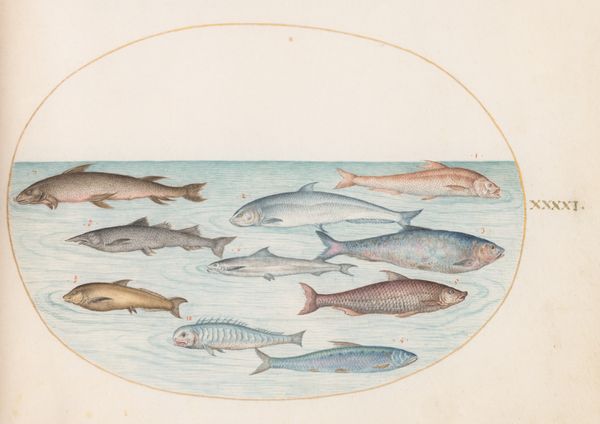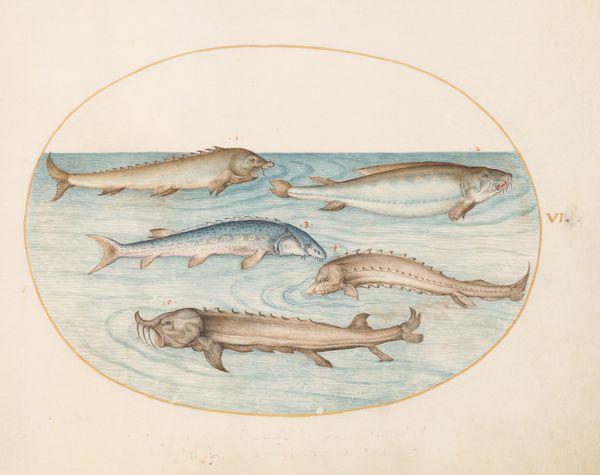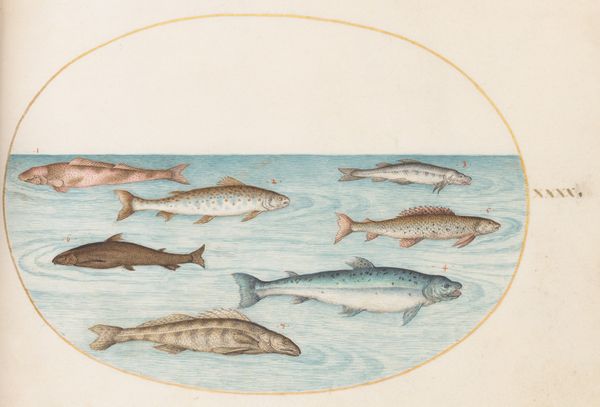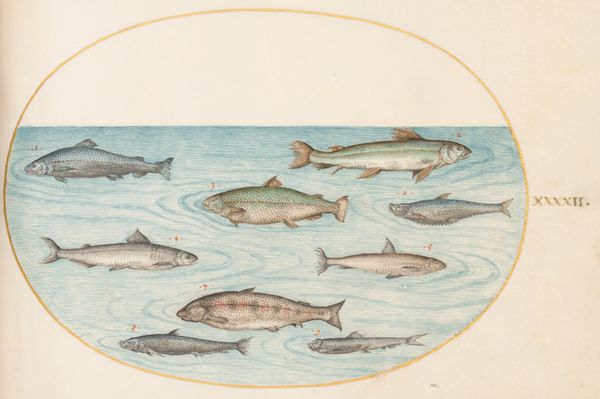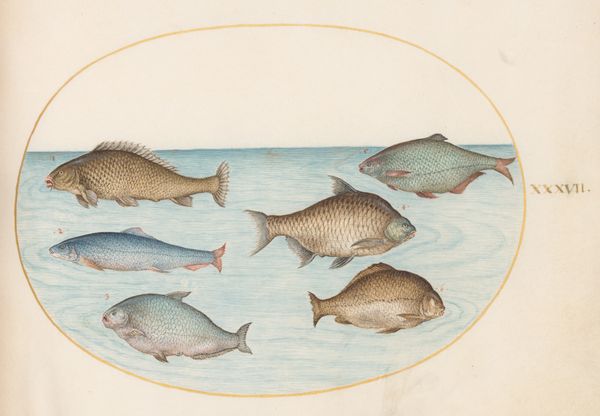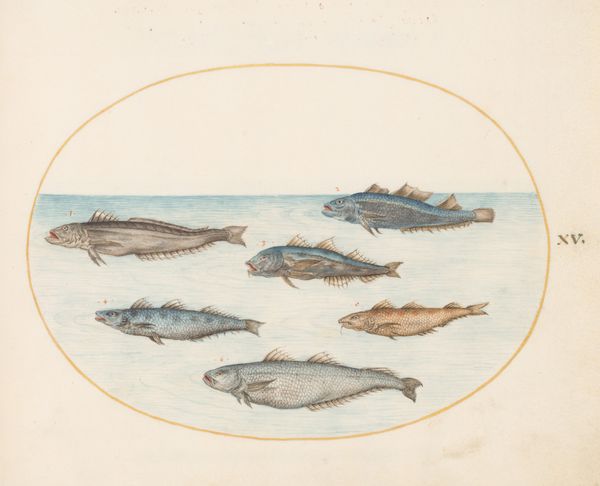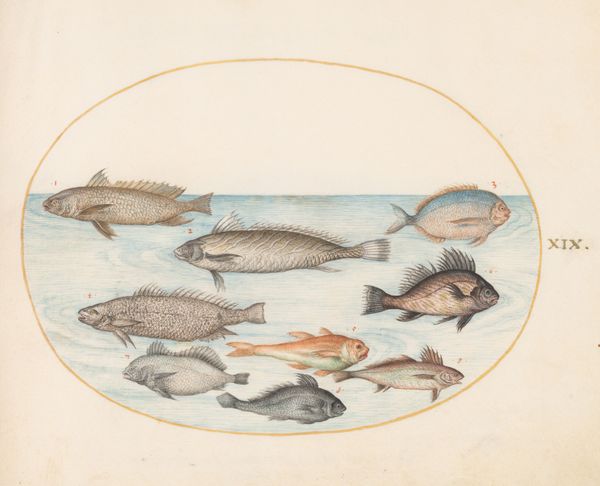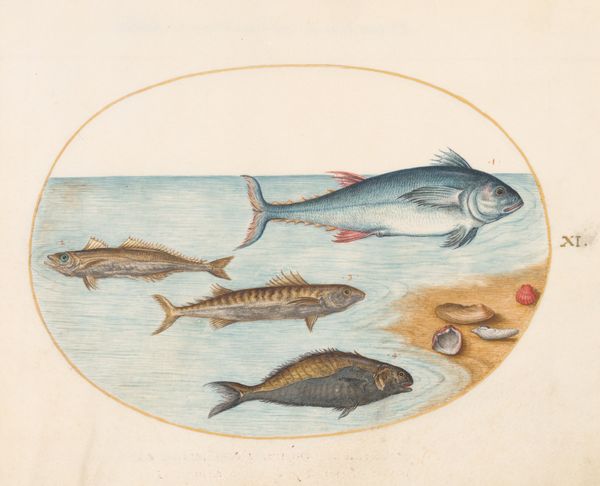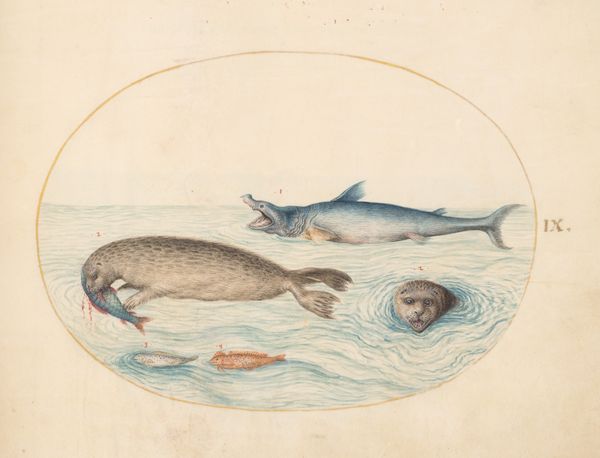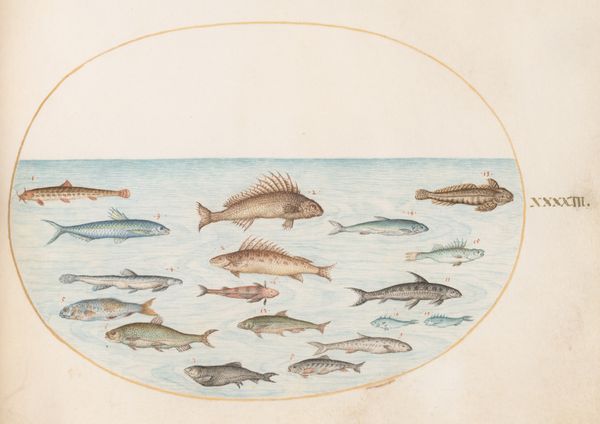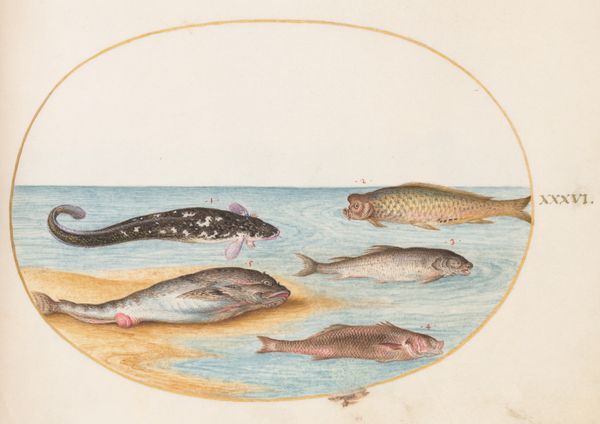
drawing, watercolor
#
drawing
#
water colours
#
figuration
#
11_renaissance
#
watercolor
#
coloured pencil
#
watercolour illustration
#
genre-painting
#
watercolor
Dimensions: page size: 14.3 x 18.4 cm (5 5/8 x 7 1/4 in.)
Copyright: National Gallery of Art: CC0 1.0
Curator: Well, here we have Joris Hoefnagel’s “Plate 4: Four Salmon” dating from around 1575 to 1580. It’s a beautiful watercolour and ink drawing. What do you make of it? Editor: Initially, they look aggressive, almost monstrous! The way they're drawn, these aren't peaceful fish; they have real, palpable teeth! Though the colours are subtle, there is a stark sense of foreboding. I almost shudder at the thought of being near them. Curator: That’s interesting because Hoefnagel was actually employed by Emperor Rudolf II, who kept a vast menagerie. These meticulously rendered natural history studies weren't just decorative; they were scientific documents meant to capture nature's intricacies, which, in the Renaissance, was viewed as symbolic of divine creation. It is very artisanal! Editor: Ah, but isn't there a tension there? On the one hand, scientific precision—each scale, each fin, painstakingly recorded. But those fierce teeth undermine the calm, dispassionate observation we might expect. Consider, too, the economics of this craft. Someone prepared the pigments. Someone else made the paper. Did the artist fish these up himself? Did he buy them at the market? Curator: Perhaps he's showing us nature red in tooth and claw, the circle of life illustrated in miniature. Think about what these materials represented then—precious pigments traded across continents, the value of parchment. And the patronage! Someone thought this detailed study of fish was worth funding! Imagine Hoefnagel hunched over his drawing table in Prague, trying to get the scales just right... There's so much history embedded in that water colour wash. Editor: Exactly! We're accustomed to thinking of watercolour as ephemeral, light. But here, it's harnessed for an intensely focused, almost obsessive, gaze. And don't forget the social context. These weren’t mass-produced prints. It's a unique commodity, a bespoke product of skilled labor for a select elite. Even today the quality in art pieces, are hard to recreate. Curator: So, maybe these fish, caught between art and science, beauty and aggression, luxury and labour, aren't just swimming in water. They’re swimming in history. Editor: A delectable thought. I came away with the craftsmanship embedded in this watercolour, what could be further uncovered on these artisanal art works and the amount of historical, resourceful labour instilled with their existence.
Comments
No comments
Be the first to comment and join the conversation on the ultimate creative platform.
